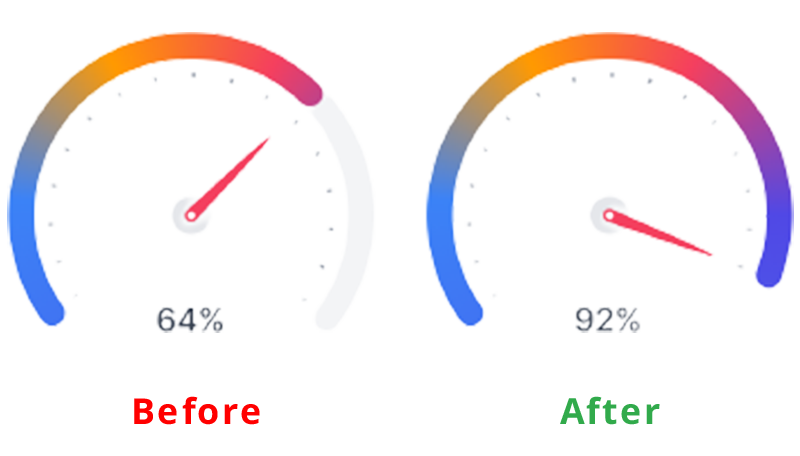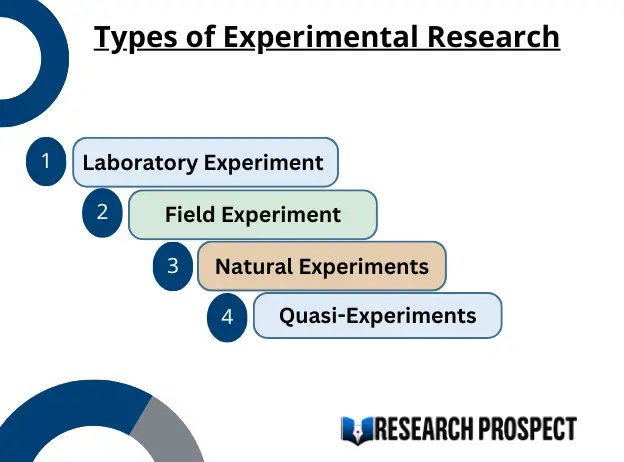A Quick Guide to Experimental Research
Experimental research refers to the experiments conducted in the laboratory or observation under controlled conditions. Researchers try to find out the cause-and-effect relationship between two or more variables.
The subjects/participants in the experiment are selected and observed. They receive treatments such as changes in room temperature, diet, atmosphere, or given a new drug to observe the changes. Experiments can vary from personal and informal natural comparisons. It includes three types of variables;
- Independent variable
- Dependent variable
- Controlled variable
Before conducting experimental research, you need to have a clear understanding of the experimental design. A true experimental design includes identifying a problem, formulating a hypothesis, determining the number of variables, selecting and assigning the participants, types of research designs, meeting ethical values, etc.
There are many types of research methods that can be classified based on:
- The nature of the problem to be studied
- Number of participants (individual or groups)
- Number of groups involved (Single group or multiple groups)
- Types of data collection methods (Qualitative/Quantitative/Mixed methods)
- Number of variables (single independent variable/ factorial two independent variables)
- The experimental design
Types of Experimental Research
Laboratory Experiment
It is also called experimental research. This type of research is conducted in the laboratory. A researcher can manipulate and control the variables of the experiment.
Example:
Milgram’s experiment on obedience.
| Pros | Cons |
|---|---|
|
|
Field Experiment
Field experiments are conducted in the participants’ open field and the environment by incorporating a few artificial changes. Researchers do not have control over variables under measurement. Participants know that they are taking part in the experiment.
| Pros | Cons |
|---|---|
|
|
Natural Experiments
The experiment is conducted in the natural environment of the participants. The participants are generally not informed about the experiment being conducted on them.
Examples:
Estimating the health condition of the population.
Did the increase in tobacco prices decrease the sale of tobacco?
Did the usage of helmets decrease the number of head injuries of the bikers?
| Pros | Cons |
|---|---|
|
|
Quasi-Experiments
A quasi-experiment is an experiment that takes advantage of natural occurrences. Researchers cannot assign random participants to groups.
Example:
Comparing the academic performance of the two schools.
| Pros | Cons |
|---|---|
|
|
Does your Research Methodology Have the Following?
- Great Research/Sources
- Perfect Language
- Accurate Sources
If not, we can help. Our panel of experts makes sure to keep the 3 pillars of Research Methodology strong.

How to Conduct Experimental Research?
Step 1. Identify and Define the Problem
You need to identify a problem as per your field of study and describe your research question.
Example:
You want to know about the effects of social media on the behavior of youngsters. It would help if you found out how much time students spend on the internet daily.
Example:
You want to find out the adverse effects of junk food on human health. It would help if you found out how junk food frequent consumption can affect an individual’s health.
Step 2. Determine the Number of Levels of Variables
You need to determine the number of variables. The independent variable is the predictor and manipulated by the researcher. At the same time, the dependent variable is the result of the independent variable.
| Independent variables | Dependent variables | Confounding Variable |
|---|---|---|
| The number of hours youngsters spend on social media daily. | The overuse of social media among the youngsters and negative impact on their behaviour. | Measure the difference between youngsters’ behaviour with the minimum social media usage and maximum social media utilisation. You can control and minimise the number of hours of using the social media of the participants. |
| The overconsumption of junk food. | Adverse effects of junk food on human health like obesity, indigestion, constipation, high cholesterol, etc. | Identify the difference between people’s health with a healthy diet and people eating junk food regularly. You can divide the participants into two groups, one with a healthy diet and one with junk food. |
In the first example, we predicted that increased social media usage negatively correlates with youngsters’ negative behaviour.
In the second example, we predicted the positive correlation between a balanced diet and a good healthy and negative relationship between junk food consumption and multiple health issues.
Step 3. Formulate the Hypothesis
One of the essential aspects of experimental research is formulating a hypothesis. A researcher studies the cause and effect between the independent and dependent variables and eliminates the confounding variables. A null hypothesis is when there is no significant relationship between the dependent variable and the participants’ independent variables. A researcher aims to disprove the theory. H0 denotes it. The Alternative hypothesis is the theory that a researcher seeks to prove. H1or HA denotes it.
| Null hypothesis H0 | Alternate hypothesis H1 or HA |
|---|---|
| The usage of social media does not correlate with the negative behaviour of youngsters. | Over-usage of social media affects the behaviour of youngsters adversely. |
| There is no relationship between the consumption of junk food and the health issues of the people. | The over-consumption of junk food leads to multiple health issues. |
Why should you use a Plagiarism Detector for your Paper?
It ensures:
- Original work
- Structure and Clarity
- Zero Spelling Errors
- No Punctuation Faults

Step 4. Selection and Assignment of the Subjects
It’s an essential feature that differentiates the experimental design from other research designs. You need to select the number of participants based on the requirements of your experiment. Then the participants are assigned to the treatment group. There should be a control group without any treatment to study the outcomes without applying any changes compared to the experimental group.
Randomisation: The participants are selected randomly and assigned to the experimental group. It is known as probability sampling. If the selection is not random, it’s considered non-probability sampling.
Stratified sampling: It’s a type of random selection of the participants by dividing them into strata and randomly selecting them from each level.
| Randomisation | Stratified sampling |
|---|---|
| Participants are randomly selected and assigned a specific number of hours to spend on social media. | Participants are divided into groups as per their age and then assigned a specific number of hours to spend on social media. |
| Participants are randomly selected and assigned a balanced diet. | Participants are divided into various groups based on their age, gender, and health conditions and assigned to each group’s treatment group. |
Matching: Even though participants are selected randomly, they can be assigned to the various comparison groups. Another procedure for selecting the participants is ‘matching.’ The participants are selected from the controlled group to match the experimental groups’ participants in all aspects based on the dependent variables.
What is Replicability?
When a researcher uses the same methodology and subject groups to carry out the experiments, it’s called ‘replicability.’ The results will be similar each time. Researchers usually replicate their own work to strengthen external validity.
Step 5. Select a Research Design
You need to select a research design according to the requirements of your experiment. There are many types of experimental designs as follows.
| Type of Research Design | Definition |
|---|---|
| Two-group Post-test only | It includes a control group and an experimental group selected randomly or through matching. This experimental design is used when the sample of subjects is large. It is carried out outside the laboratory. Group’s dependent variables are compared after the experiment. |
| Two-group pre-test post-test only. | It includes two groups selected randomly. It involves pre-test and post-test measurements in both groups. It is conducted in a controlled environment. |
| Soloman 4 group design | It includes both post-test-only group and pre-test-post-test control group design with good internal and external validity. |
| Factorial design | Factorial design involves studying the effects of two or more factors with various possible values or levels. Example: Factorial design applied in optimisation technique. |
| Randomised block design | It is one of the most widely used experimental designs in forestry research. It aims to decrease the experimental error by using blocks and excluding the known sources of variation among the experimental group. |
| Cross over design | In this type of experimental design, the subjects receive various treatments during various periods. |
| Repeated measures design | The same group of participants is measured for one dependant variable at various times or for various dependant variables. Each individual receives experimental treatment consistently. It needs a minimum number of participants. It uses counterbalancing (randomising and reversing the order of subjects and treatment) and increases the treatments/measurements’ time interval. |
Step 6. Meet Ethical and Legal Requirements
- Participants of the research should not be harmed.
- The dignity and confidentiality of the research should be maintained.
- The consent of the participants should be taken before experimenting.
- The privacy of the participants should be ensured.
- Research data should remain confidential.
- The anonymity of the participants should be ensured.
- The rules and objectives of the experiments should be followed strictly.
- The privacy of the participants should be ensured.
- Any wrong information or data should be avoided.
Tips for Meeting the Ethical Considerations
To meet the ethical considerations, you need to ensure that.
- Participants have the right to withdraw from the experiment.
- They should be aware of the required information about the experiment.
- It would help if you avoided offensive or unacceptable language while framing the questions of interviews, questionnaires, or Focus groups.
- You should ensure the privacy and anonymity of the participants.
- You should acknowledge the sources and authors in your dissertation using any referencing styles such as APA/MLA/Harvard referencing style.
Step 7. Collect and Analyse Data.
Collect the data by using suitable data collection according to your experiment’s requirement, such as observations, case studies, surveys, interviews, questionnaires, etc. Analyse the obtained information.
Step 8. Present and Conclude the Findings of the Study.
Write the report of your research. Present, conclude, and explain the outcomes of your study.
Frequently Asked Questions
The first step in conducting experimental research is to define your research question or hypothesis. Clearly outline the purpose and expectations of your experiment to guide the entire research process.







